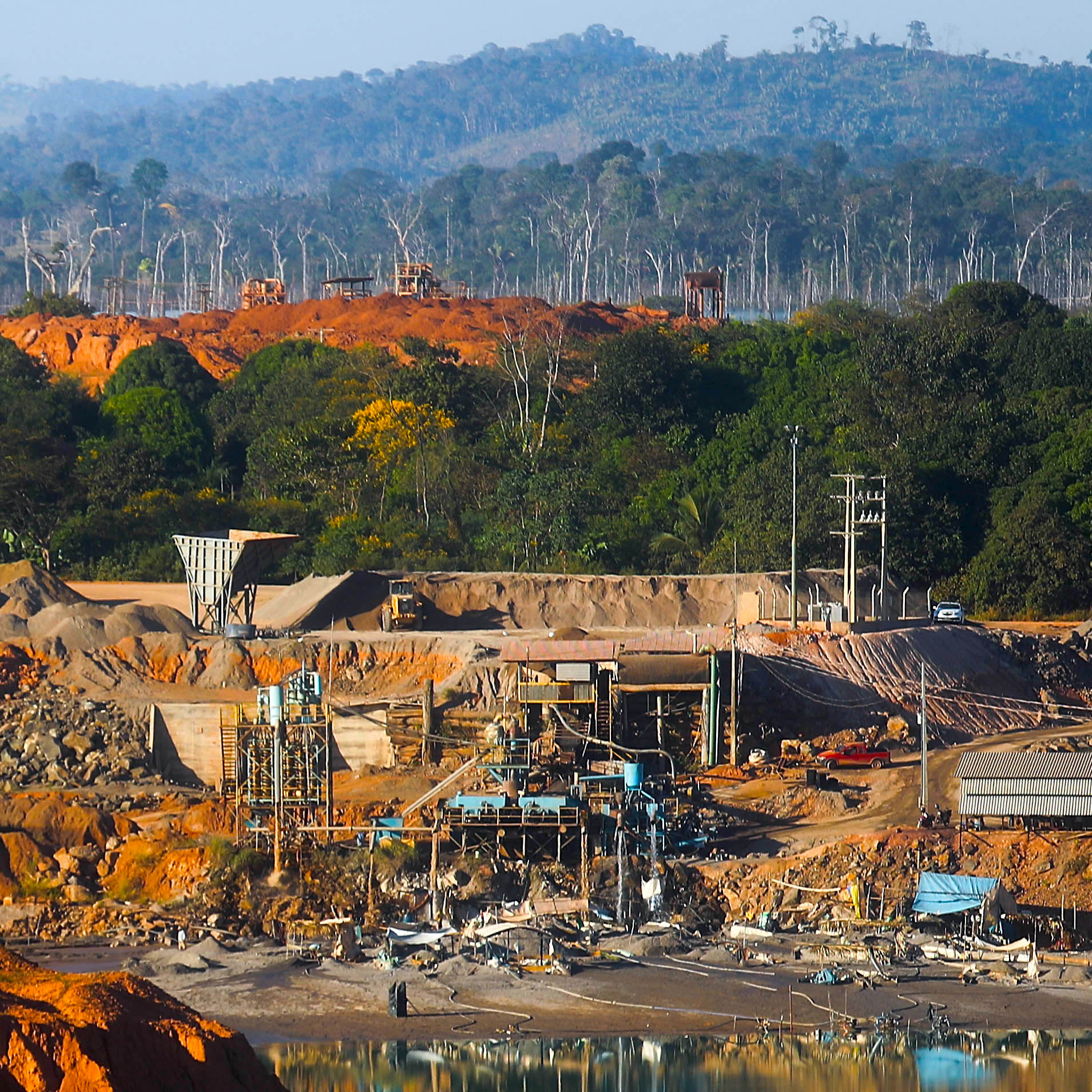

Relatively few civilizations are the original residents of the regions they inhabit — the result of colonization and struggles over land and resources. The world’s indigenous peoples are either extinct, struggling to survive, or facing the more gradual effects of assimilation, urbanization, modernization, and other forces. The deliberate killing of indigenous societies, which has occurred many times over, continues to threaten millions of people around the world.
According to the United Nations, there are an estimated 370 million indigenous people, comprising about 5% of the world’s population. This figure, which only includes native groups recognized by UN member states, is just an estimate. In a recent study, the U.S. nonprofit Center for World Indigenous Studies identified more than 5,000 indigenous nations and communities comprising more than 1 billion people worldwide.
The discrepancy could be partially due to the fact that Russia, China, and Burma have said they do not have any indigenous people — a dubious claim. The long histories of colonialism these groups have experienced make their identification and any measurement an even greater challenge.
In other words, just as it is impossible to know how many native societies have been wiped out, it is impossible to know the degree to which the thousands of indigenous societies are at risk of extinction. While all native populations remain at risk, several factors help identify the most threatened indigenous populations. For example, the presence of natural resources, or really anything of value, is often the tell-tale sign that a population is at risk of displacement. Whether it is crude oil in Iraq, natural gas in Peru, a pipeline project in the United States, or diamonds in Botswana, in the eyes of governments and corporations, the value of natural resources almost always outweighs land rights of indigenous communities.
24/7 Wall St. discussed the threats facing indigenous societies with experts, reviewed news reports, UNESCO’s Atlas of the World’s Languages in Danger, national economic data, and national regulations to identify examples of the world’s most threatened native groups.
Click here to see 15 most threatened indigenous groups.
A common perception is that indigenous societies are disappearing because they are unable to adapt to a new world. Rudolph Ryser, executive director of the Center for World Indigenous Studies wrote in an email to 24/7 Wall St., “The perception of disappearing peoples is a product of state, educational and other corporate propaganda.”
The indigenous societies at risk of imminent extinction are not disappearing, they are being intentionally destroyed. The problem occurs most frequently when abundant natural resources are at stake in areas with few regulations. Regulations regarding land ownership, development, mining restrictions, and so on serve to protect — at least to some extent — the rights of those living in that land — indigenous or not.
In many cases, governments will choose to designate lands as uninhabited, paving the way for deforestation and development. In other cases, governments and private organizations will actively exploit, forcibly deport, and even murder these populations. In either case, this systemic eradication is a choice made by regional governments.
To identify 15 of the most threatened indigenous groups, 24/7 Wall St. discussed the threats facing indigenous societies with experts, reviewed news reports, examined data from UNESCO’s Atlas of the World’s Languages in Danger, national economic data, and national regulations to identify 15 regions where the original inhabitants face among the most serious threats. This list is a set of examples demonstrating threats common to many more indigenous societies. Some groups on this list are one tribe, while others represent multiple indigenous communities.
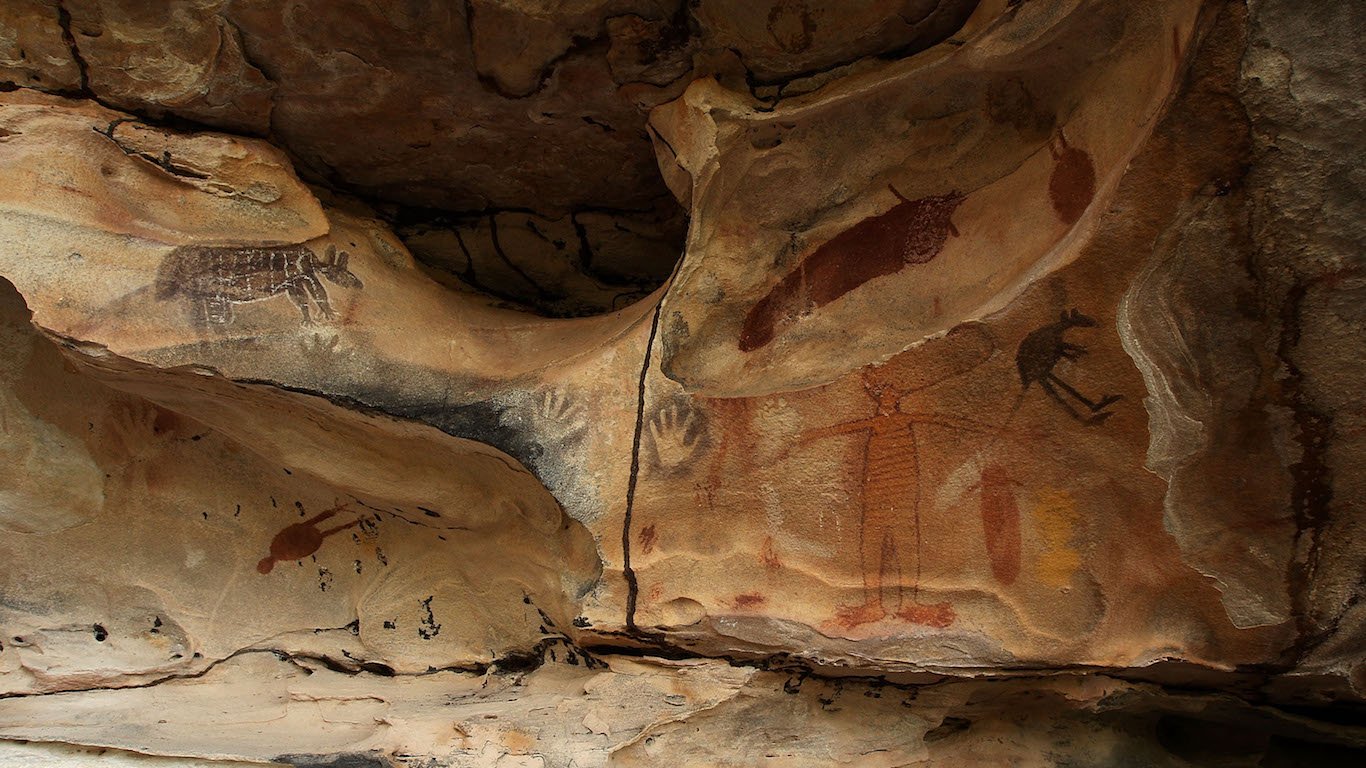
1. Aboriginal people
> Area: Australia
While the Aboriginal people of Australia tend to be identified as one group, there are actually over 500 different Aboriginal peoples, each with their own language and territory. For centuries, ever since the British colonized Australia, the original inhabitants were marginalized and worse — their land was taken from them and their culture and language eradicated. In 1992, the Australian High Court declared the concept of terra nullius — the claim that the land was empty before the British arrived — to be invalid. This was over 90 years after the country’s independence.
Estimating the endangerment of a language is one way to measure the level of threat against indigenous societies. UNESCO has identified 108 extinct or endangered languages belonging to societies native to Australia.
[in-text-ad]

2. Bushmen
> Area: Botswana
In the middle of an unrelenting land unsuitable for crops lies Botswana’s Central Kalahari Game Reserve, the ancestral home of the Tsila Bushmen. But when diamonds were discovered in the reserve in the early 1980s, government ministers warned the tribe that it was their time to leave. In three clearances in 1997, 2002, and 2005, virtually all Bushmen were forced out, their homes dismantled and water supply destroyed. The Bushmen won a historic victory when judges ruled that their eviction was unlawful and unconstitutional.
Ghaghoo, one of the mines discovered in Bushmen territory, was estimated to contain a diamond deposit of approximately $4 billion. It opened for excavation in 2014. As of 2016 diamonds made up more than 60% of Botswana’s exports, accounting for approximately 25% of the country’s GDP.
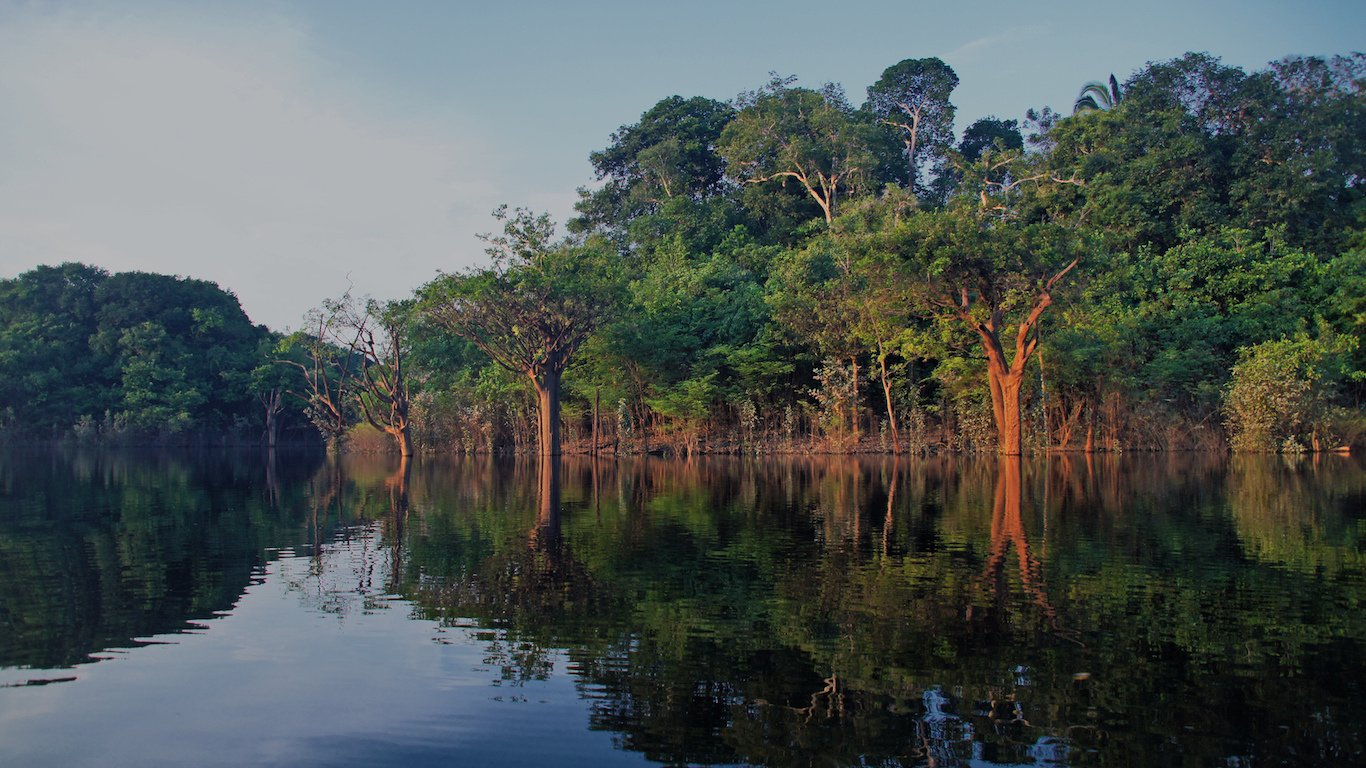
3. Awá
> Area: Brazil
Victims of greed and industrialization, the Awá inhabit the dense Amazon forests in northeastern Brazil, which have all but disappeared. In fact, over 34% of at least one legally-protected Awá reservation has been destroyed by illegal logging in the last three decades — an unusually fast pace of destruction.
But it was the discovery of the largest iron ore mine on the planet in Carajás, 370 miles west of the Awá’s forest that began to spell their destruction. Railways constructed in the 1980s brought trains to forests where previously uncontacted Awá lived. With little regard to the inhabitants, the colonizers hunted and settled on the territory. The spread of disease from newcomers cut through the Awá population, reducing one community to 25 people from 91 in four years. Although the government dispatched troops and federal agents to curb illegal logging in 2014, considered a major victory, logging continued. Only the rainy season provides the Awa some relief as it is difficult to log then.
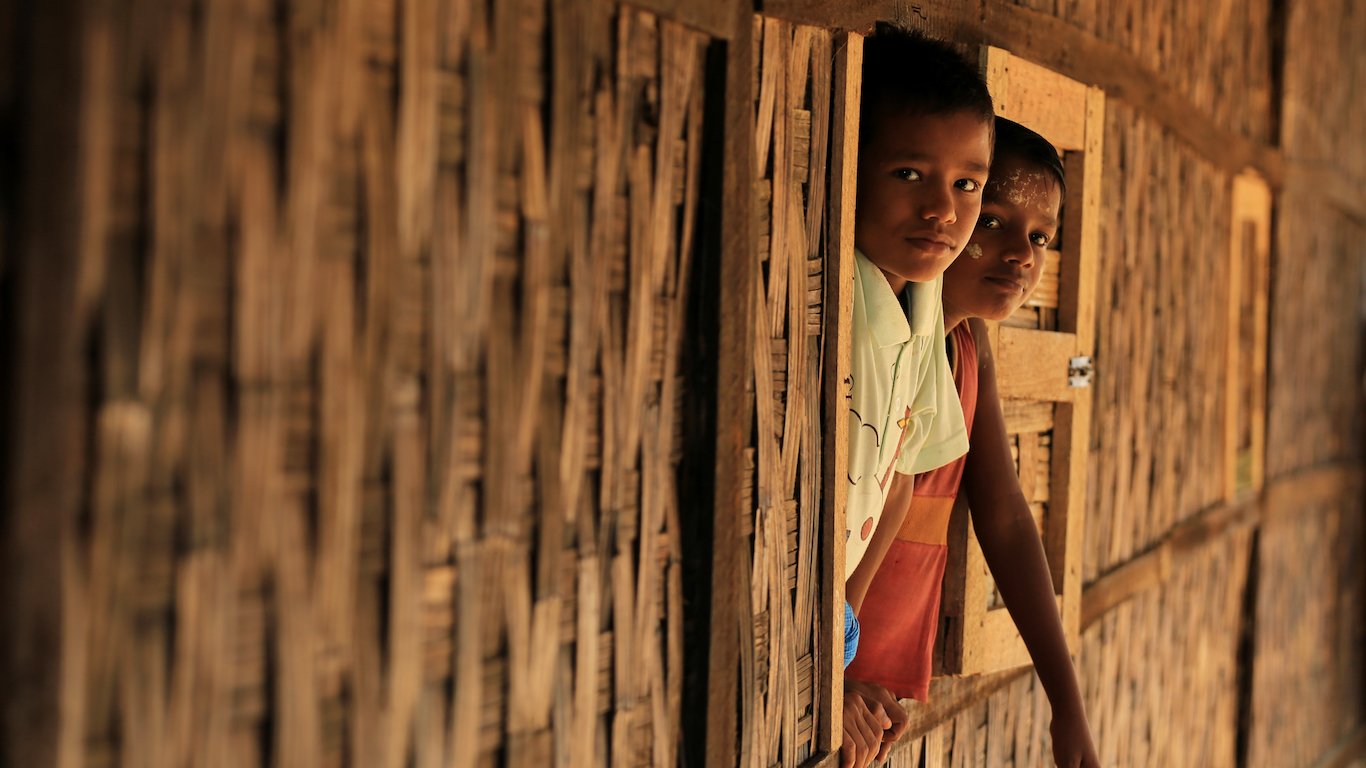
4. Rohingya
> Area: Myanmar (Burma)
While the Rohingya refer to themselves as indigenous to Myanmar, they are not recognized as a distinct ethnic group by the government. The Rohingya have been denied citizenship status since the 1980s.
Over the years, this has resulted in numerous obstacles including in access to health care, the ability to travel, and many areas of employment. Recently, in response to a Rohingya militant group attack of 30 police posts, the government responded with military force, including reportedly burning villages and indiscriminately shooting people. While Bangladesh has been receiving fleeing Rohingya since at least the 1960s, more than 480,000 Rohingya fled to Bangladesh in the past several months, with over 100,000 forced into concentration camps, according to Dr. Rudolph Ryser, the executive director of the Center for World Indigenous Studies.
[in-text-ad-2]
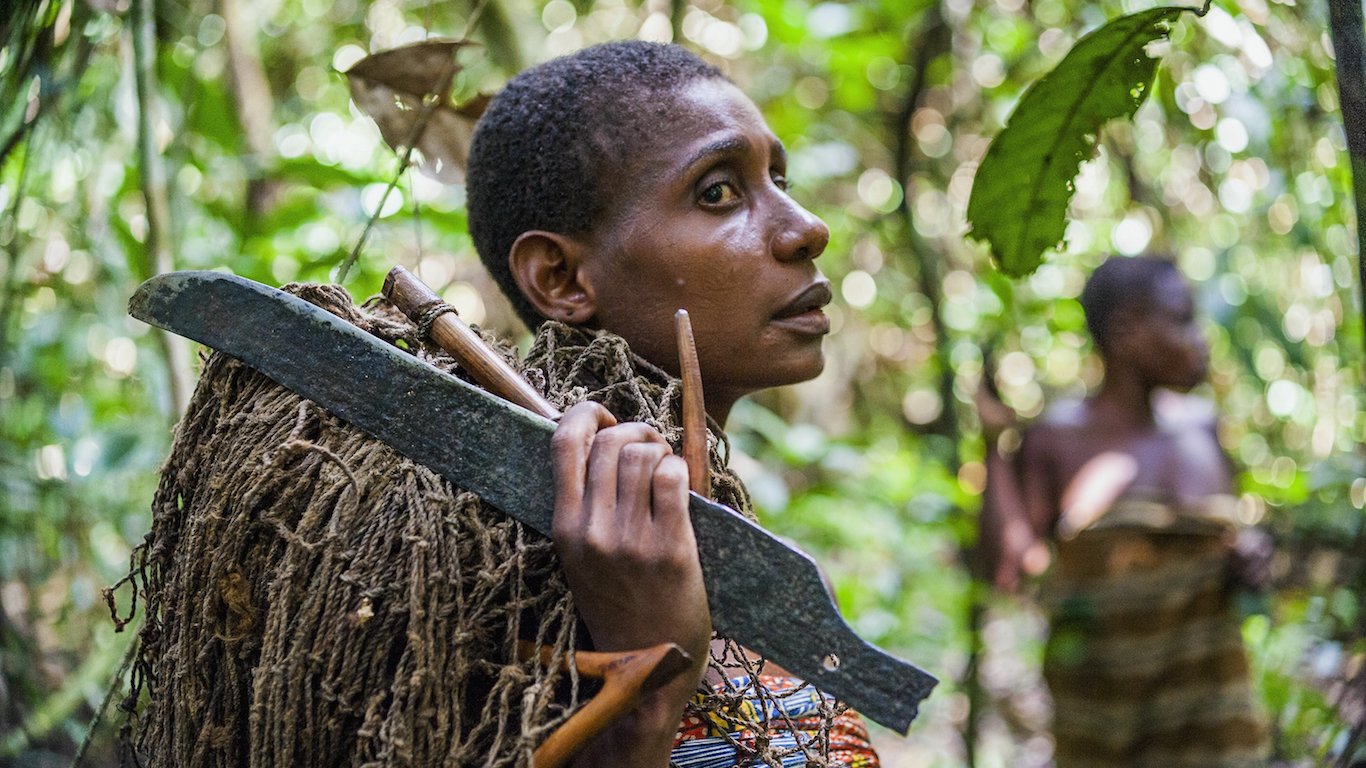
5. Pygmies
> Area: Central Africa
The Pygmy people are not one group but several distinct people such as the Twa, Aka, Baka, and Mbuti living in central Africa. Pygmies are believed to be the continent’s oldest population of humans. Because of their unusually small stature, but also because relatively little is known about them, the various tribes of Pygmies are frequently grouped into one category. A recent effort by researchers estimated as many as 920,000 Pygmies reside across countries in central Africa.
All of these indigenous societies face racism and land grabs due primarily to logging activity, much of which continues illegally due to weakly enforced regulations. In the Congo Basin, for example, hunter-gatherer communities living in the rainforest face hunting restrictions and land encroachment. According to tribal peoples advocacy organization Survival International, the Congo Basin tribes are accused of poaching when they are hunting or when they venture into protected areas they once called home. Further, park guards often treat them as thieves and worse, threaten and beat them and even evict them from their land.
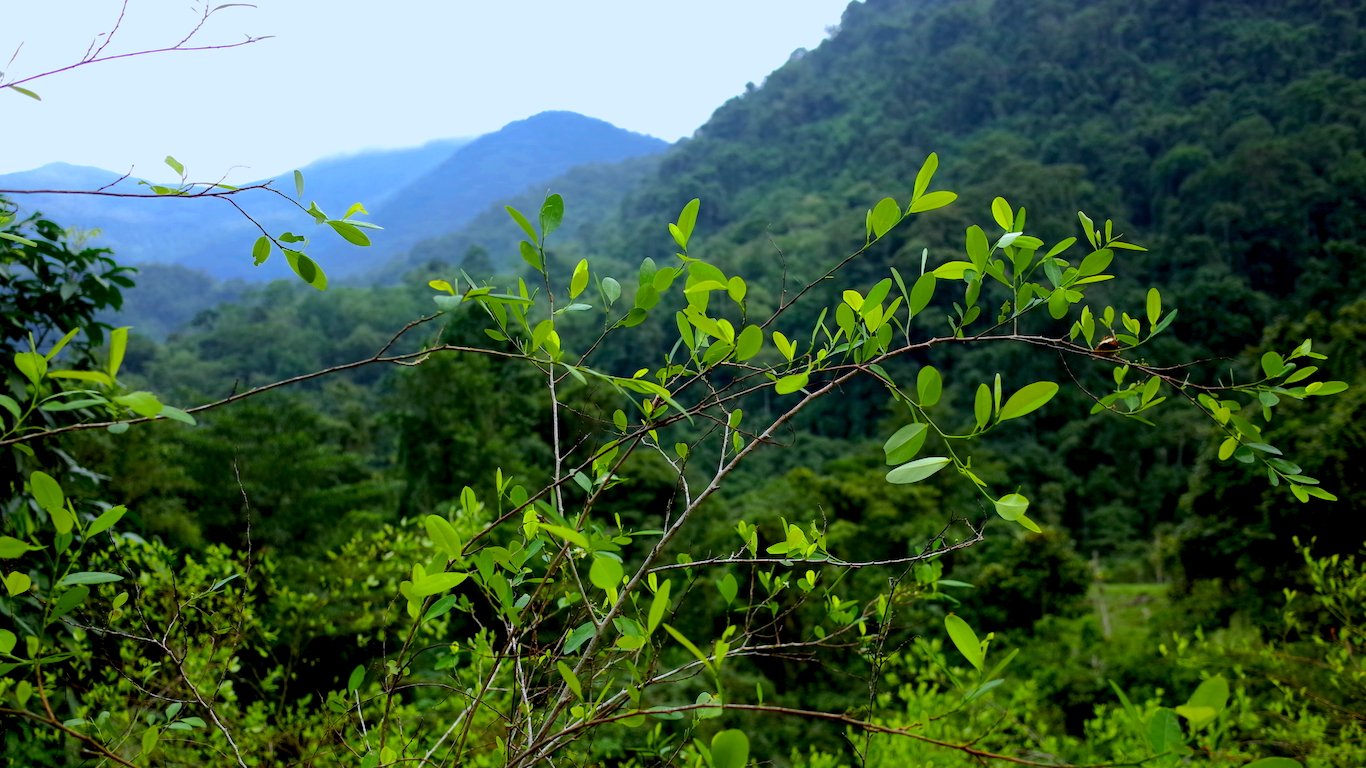
6. Nukak
> Area: Colombia
The Nukak are one of at least 34 indigenous peoples in Colombia on the brink of extinction, according to the United Nations High Commissioner for Refugees. Caught in the middle of Colombia’s longstanding civil war, the Nukak and their ancestral land have been overrun by the fighting factions over the growth of coca, the plant used in the production of cocaine. As a result of encroachment from war and coca growth, many Nukak have been forced to flee their homes. In 1988, a group of Nukak stumbled into a nearby town and made first contact with the outside world. Unfortunately, over 50% of the Nukak subsequently died from flu and malaria, according to Survival International estimates. While the Nukak Reserve was expanded in 1997, the land is still overrun by war and coca harvesters. In fact, a 2016 United Nations report showed coca production in Nukak lands increased since 2013.
[in-text-ad]
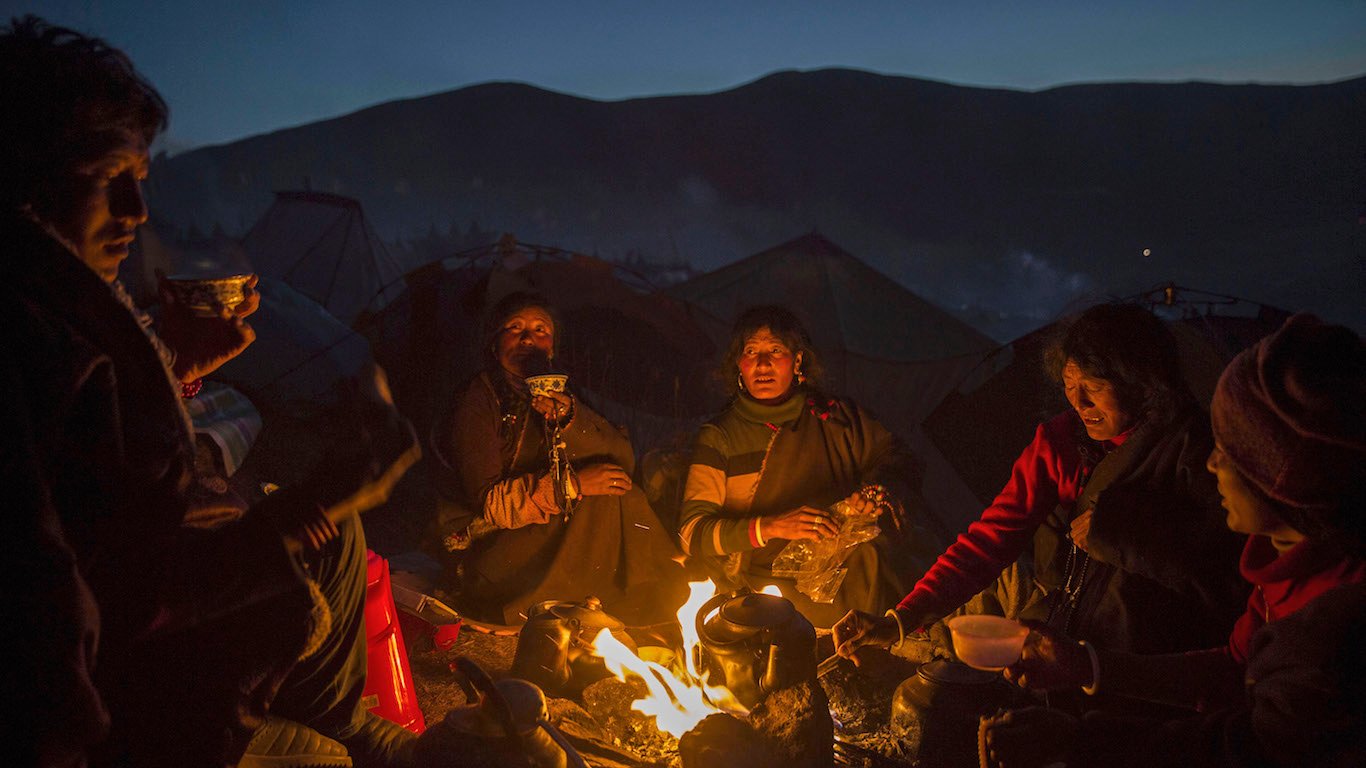
7. Tibetan people
Area: China
The People’s Republic of China proclaimed in 2008 that there were no indigenous people in China, instead designating the various native groups across the country as national minorities. Of the numerous national minorities, the original inhabitants of Tibet have perhaps been persecuted the most. For Tibetans, China’s Cultural Revolution in 1966 was a genocide. Of the hundreds of thousands of practicing Tibetan buddhist monks and nuns, nearly all were killed, jailed, or forced to go into hiding by the late 1970s. Most of the roughly 6,000 monasteries in the region had been destroyed, often at the hand of buddhists themselves, held at gunpoint by Chinese soldiers.
In general, Buddhists in Tibet and China continue to be persecuted, as festivals and public gatherings remain restricted, and religious settlements removed. The government evicted last year 5,000 monks and nuns from the Larung Gar Buddhist Academy in China’s Sichuan province and demolished half of the compound.
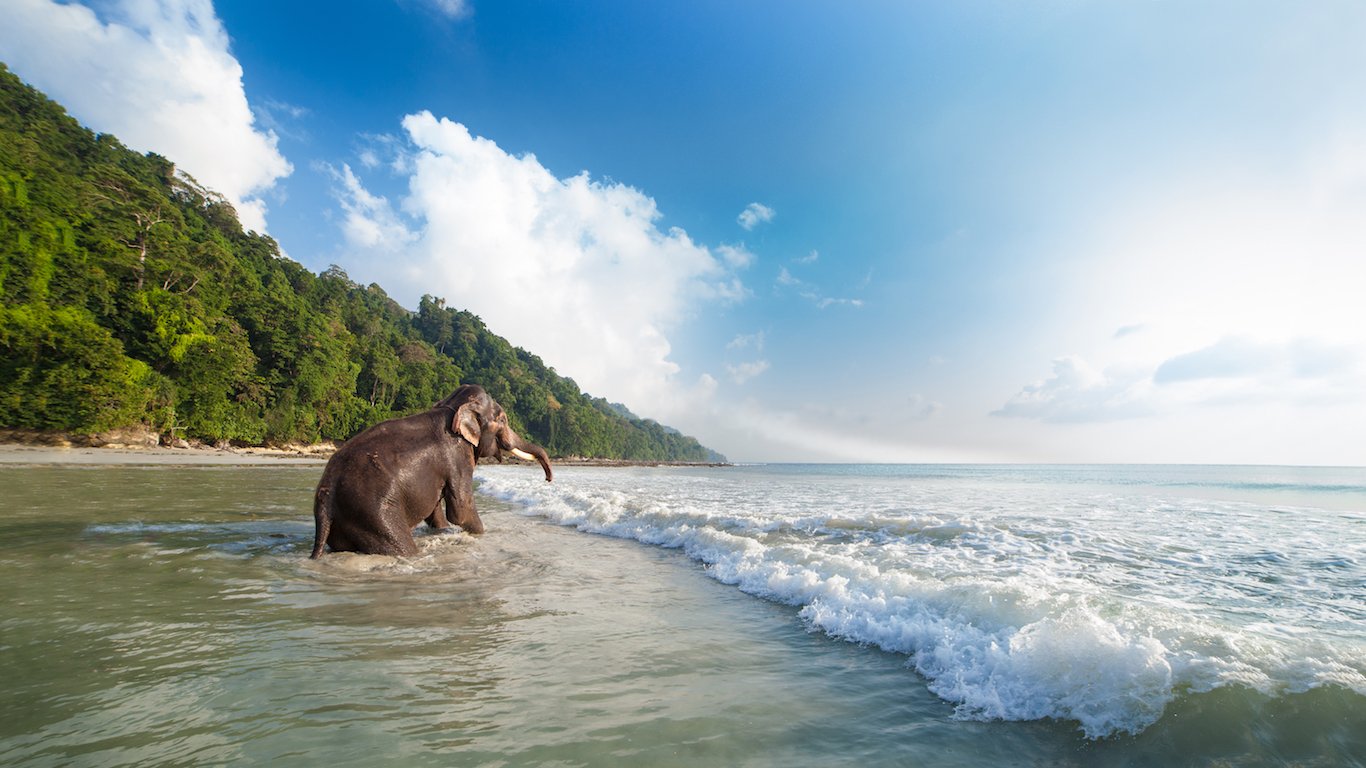
8. Jarawa
> Area: India
Although they are also victims of poaching and disease, what really threatens the Jarawa tribe is not the loss of land but the exploitation of their culture. In the Andaman Island of India, tourists can go on “human safaris” through the Jarawa reservation, where the tribe people are photographed, taunted, and even made to dance for food. India’s Supreme Court ordered the highway that goes through the reservation to be shut down in 2002, but local administrators ignored the verdict.
Although receiving some support from the Indian government, influential government ministers have still called for the Jarawa to be assimilated.
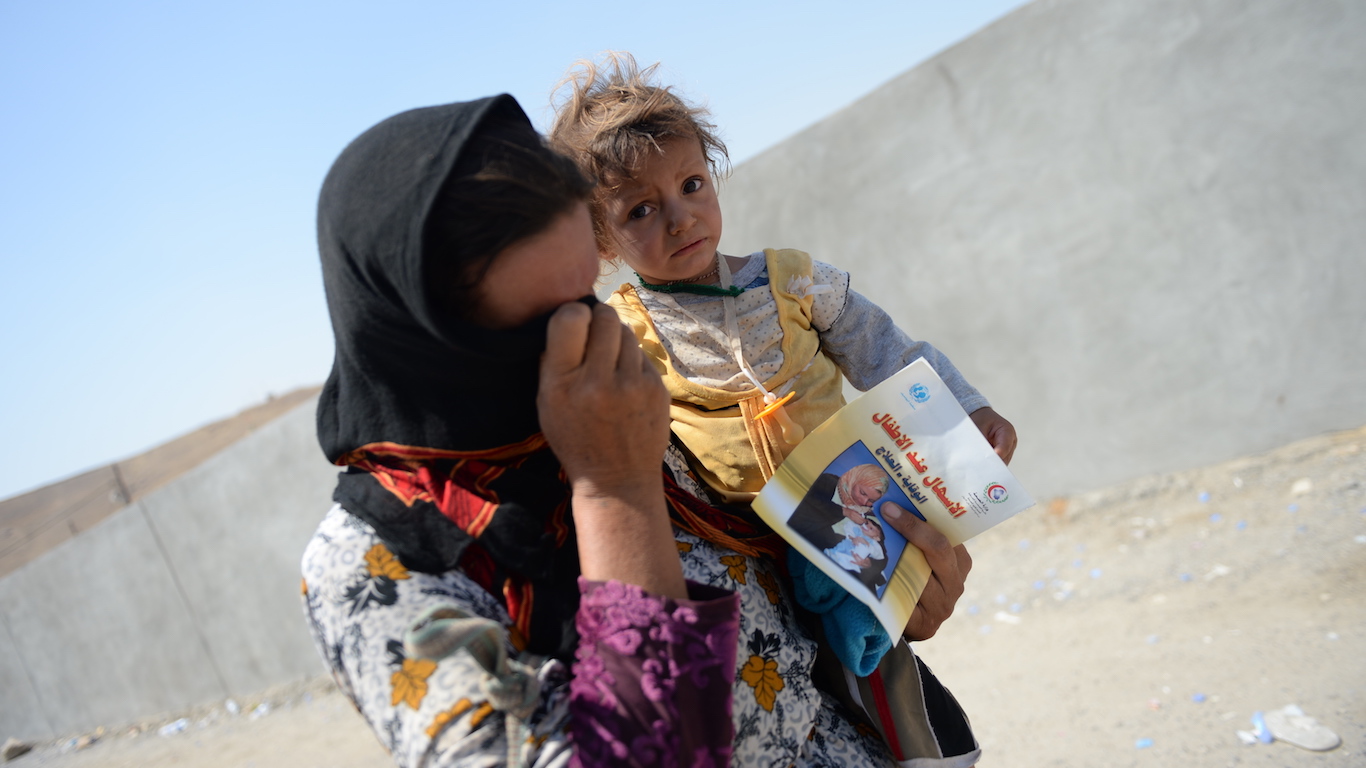
9. Yazidi
> Area: Iraq
The Yazidi have resided primarily in the northwestern mountains of Iraq for hundreds of years, and over those centuries they have been persecuted often for their religious beliefs. The threat against the Yazidi has escalated to enslavement and genocide since 2014, when the Islamic State militant group, also known as ISIL or ISIS, moved into the region. The data on population loss within oppressed groups is limited at best, but that more than 5,000 of Yazidi were killed in August of 2014 is a known fact. It is estimated that thousands of Yazidi remain in captivity. While the Iraqi military took back control of the region this summer, hundreds of thousands of Yazidi continue to flee north into Kurdish territory.
As is generally the case, the deliberate destruction of Northern Iraq’s Yazidi is tied to conflicts over natural resources. A significant portion of Iraq’s oil comes from Kirkuk in the north, the country’s oldest oil field. The oil field is reported to be producing at half capacity due to ongoing instability in the region and conflict between governments and militant groups.
[in-text-ad-2]
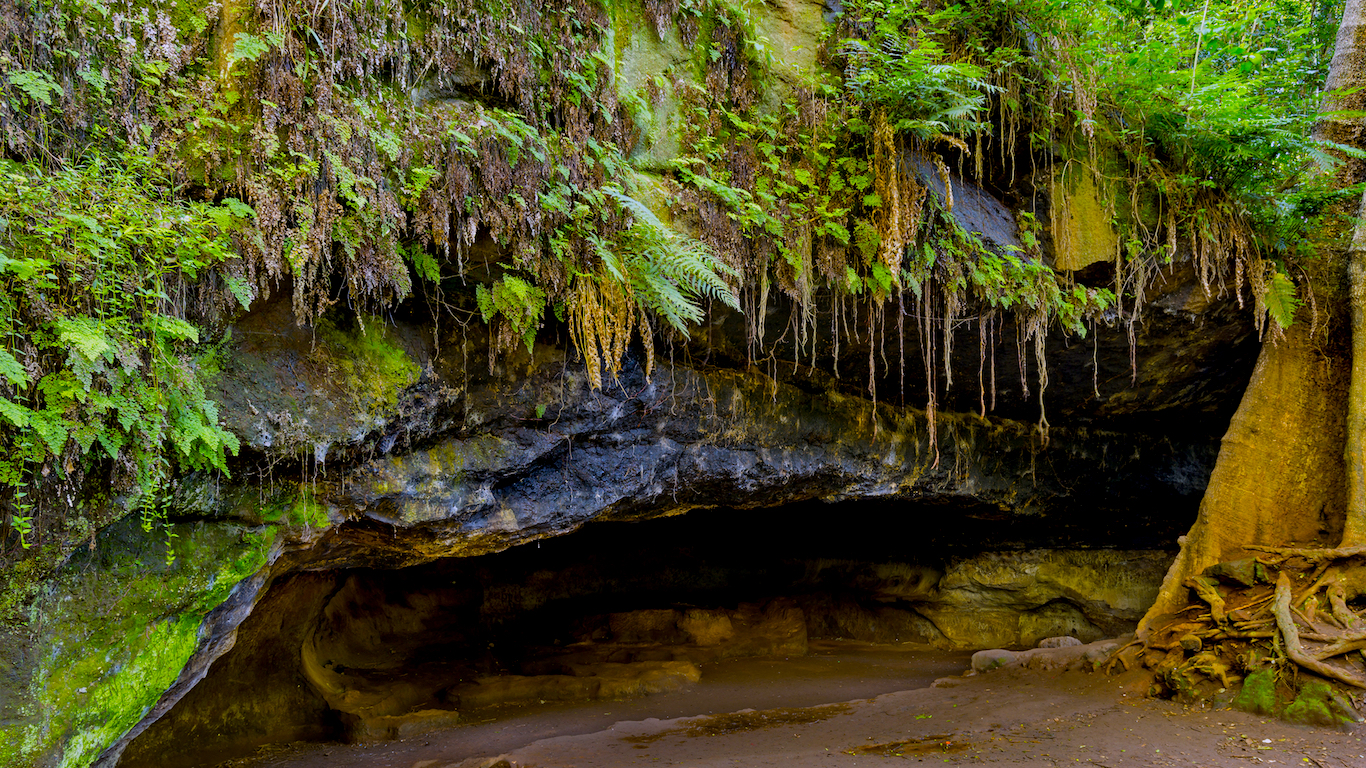
10. Ogiek
> Area: Kenya
After a nearly 10-year legal battle, the Ogiek won a landmark verdict — Kenya’s indigenous minority were awarded their right to Mau Forest, their ancestral home from which they had been forcibly evicted. It all started in the early 20th century, during Kenya’s colonial period, when governmental powers tried to evict the Ogiek on the grounds that they were degrading the forest.
As it turned out, removing the Ogiek left the forest to be exploited by logging and tea plantations. The African Court on Human and People’s Rights ruled that the Kenyan government had violated several human rights laws in its treatment of the Ogiek. But the tribe has not won everything it wanted, as mass deforestation over the years resulted in a significant loss of the Ogiek’s ancestral home.
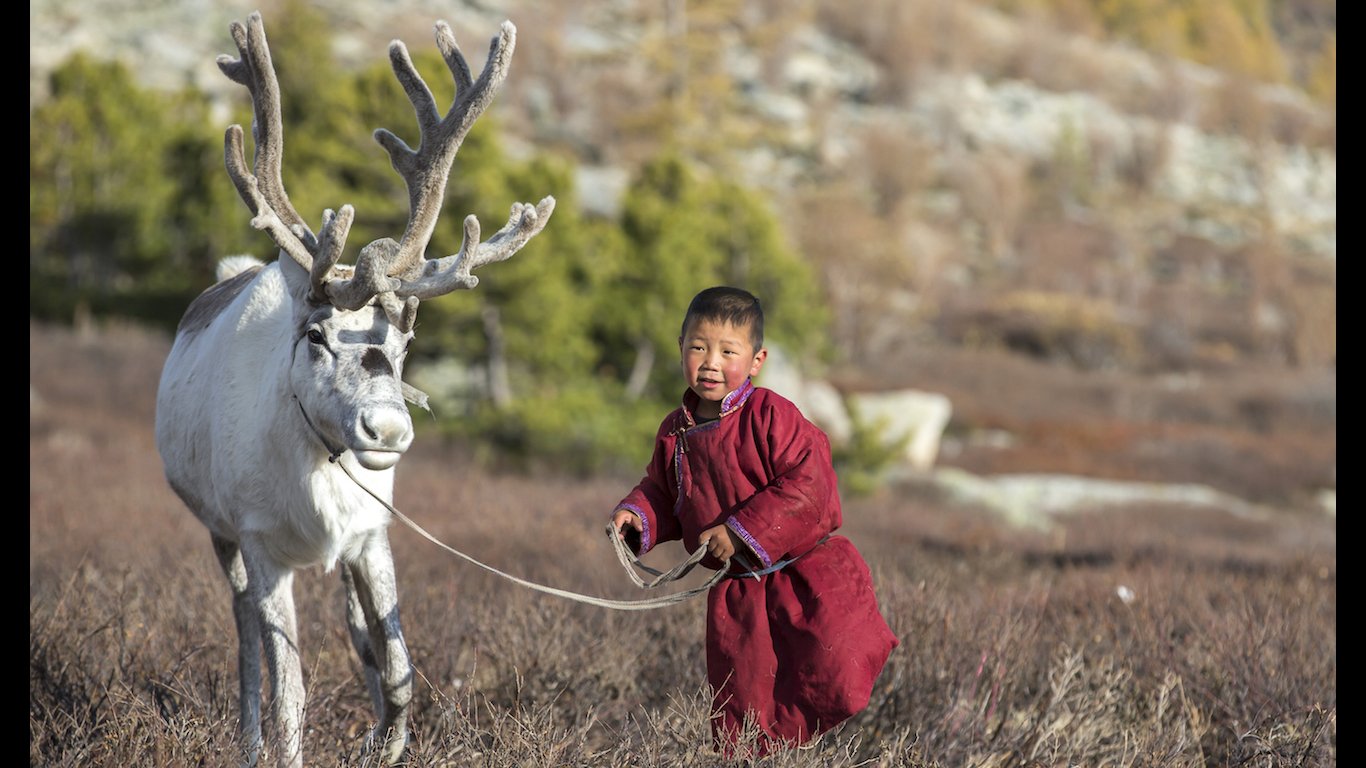
11. Dukha
> Area: Mongolia
Mongolia’s economy has grown dramatically in recent decades, due largely to the exploitation of agricultural and mineral resources. According to the Energy Information Administration, Mongolia ranked 10th in the world in primary coal exports in 2014. And with extensive mining of some of the world’s largest deposits of copper and gold — precious minerals essential to electronics manufacturing — Mongolia’s economy will likely continue to flourish.
Such developments usually come at a heavy cost to a nation’s wilderness and its inhabitants. In the case of Mongolia, at stake are some of the world’s last remaining traditional nomadic peoples and natural environments. Notably, the Dukha, reindeer herders residing in the northern taiga of Mongolia since before the country was established, have a population of just 250 people. UNESCO has identified the language Dukha as among several severely endangered languages in the region.
[in-text-ad]

12. Ayoreo
> Area: Paraguay
The Ayoreo are an isolated indigenous group in Paraguay, the country with the fastest deforestation rate in the world, according to a 2013 study by the University of Maryland. The research shows that every year, a quarter of a million hectares are lost in the Paraguayan Chaco alone. Unlike the lush Amazon, the Gran Chaco is a hot and arid territory that nomadic indigenous groups call home. Due to the mass deforestation and industrialization, the Ayoreos ancestral land is now owned by private landowners focusing on raising cattle and clearing timber. This is despite Paraguay’s government regulations that recognize indigenous rights to the land.
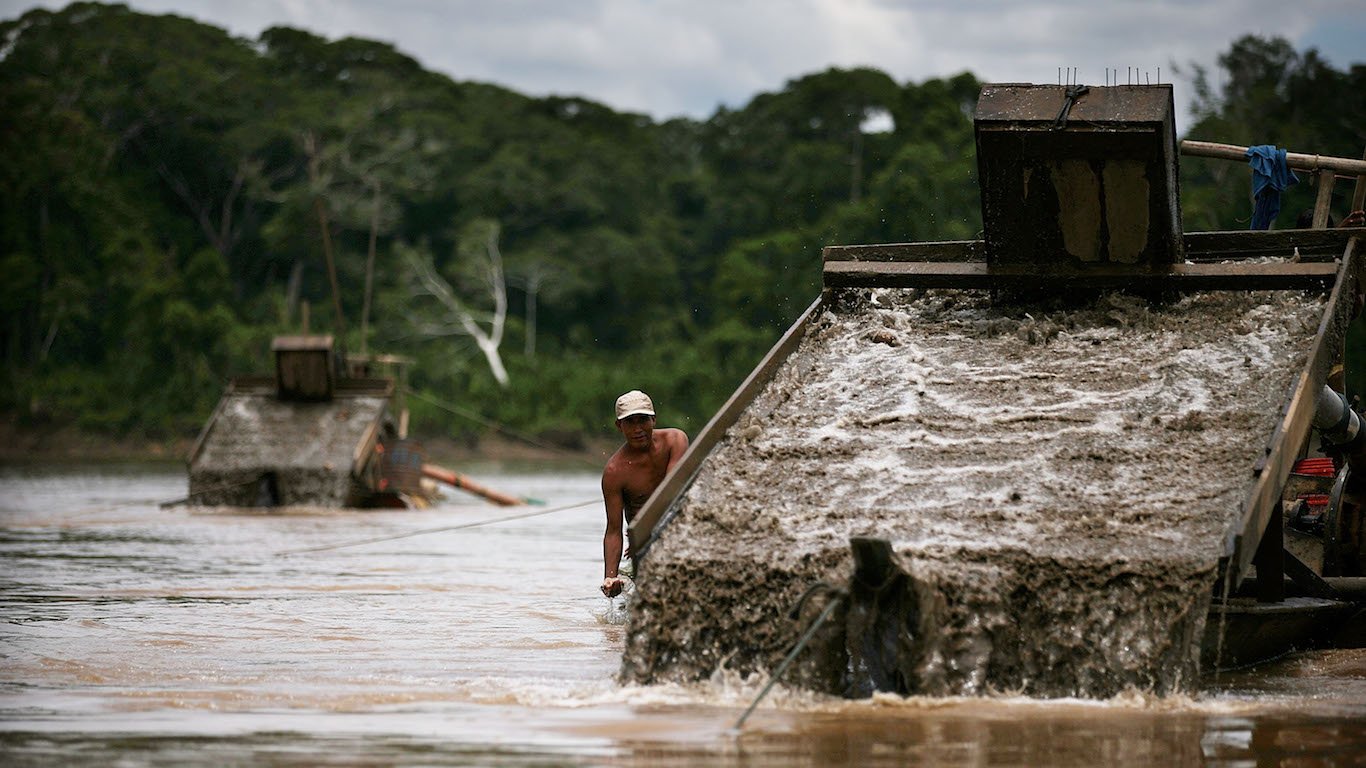
13. The Uncontacted Frontier
> Area: Peru
It was only a few weeks ago that 10 members of an uncontacted tribe in Peru were massacred while gathering eggs around a river by a group of Brazilian gold miners. The story broke when the gold miners themselves bragged about it at a local bar, brandishing a paddle that they said came from the tribe. According to the investigation, the murdered indigenous group came from the Javari Valley, home to the Uncontacted Frontier.
The Uncontacted Frontier is home to the highest concentration of secluded tribes in the world. However, the area is also resource rich, particularly with oil and gas. After establishing the Sierra del Divisor national park in Peru, the land was then opened for oil drilling, affecting the livelihood of all the uncontacted tribes. Still, just this year, Canadian oil company Pacific E&P, pulled out of oil exploration in the area, citing that it will only conduct its drilling with the highest sustainability and human rights guidelines.
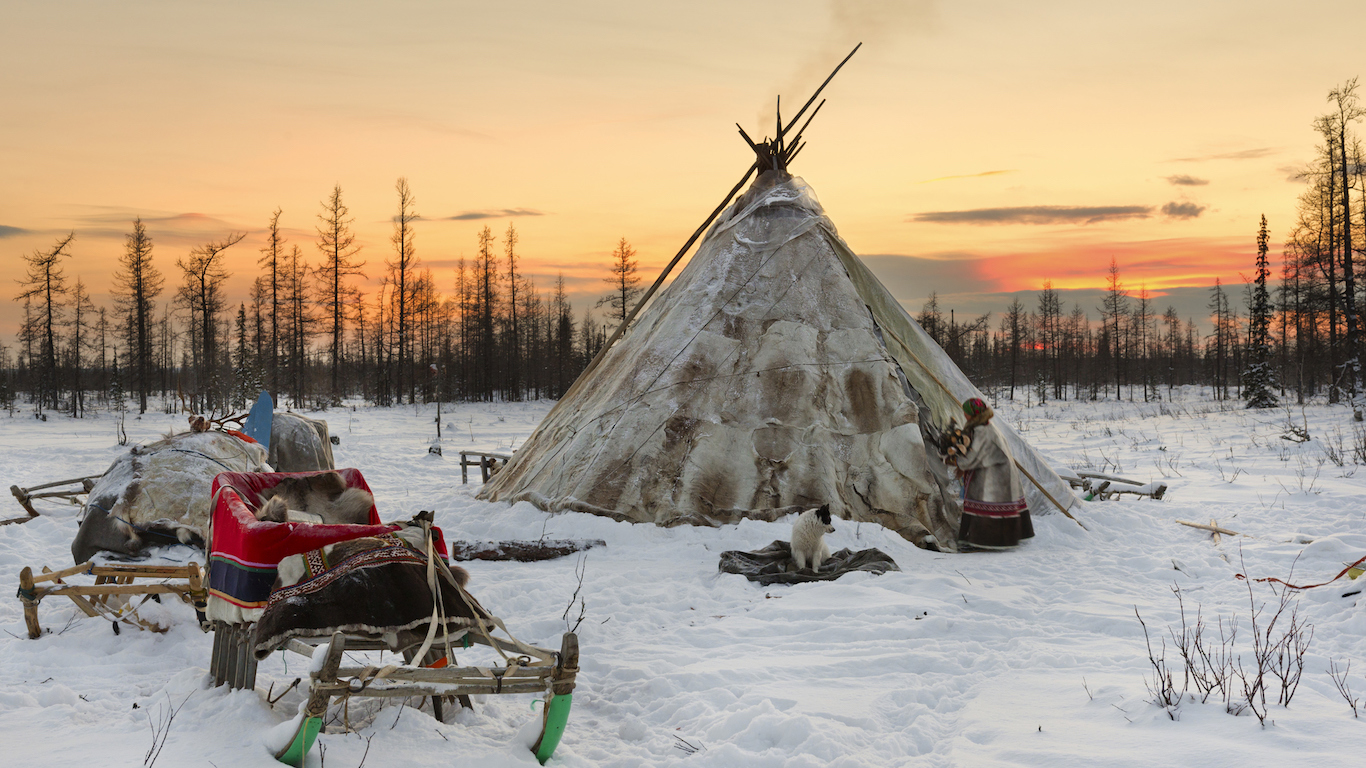
14. Siberian Tribes
> Area: Siberia
The numerous tribes native to Siberia, the massive region that makes up more than three-quarters of Russia, have struggled to survive since at least the onset of Russia’s conquest of the area in the 1600s. Due to countless massacres, an unknown number of cultures were likely lost over the centuries of land struggles between colonial powers and indigenous societies. Siberia’s native population was more recently targeted during the rapid industrialization period under the Soviet Union, when policies such as compulsory boarding schools were implemented to deliberately destroy native cultures through assimilation. The remaining indigenous people now struggle primarily against energy companies. Russia is one of the world’s largest energy producers. Much of the material used in energy production — crude oil, gas, timber, and minerals — comes from Siberia.
Estimating the endangerment of a language is one way to measure the level of threat against indigenous societies. UNESCO identified in Russia 45 extinct or critically endangered languages, most of which originate in Siberia.
[in-text-ad-2]
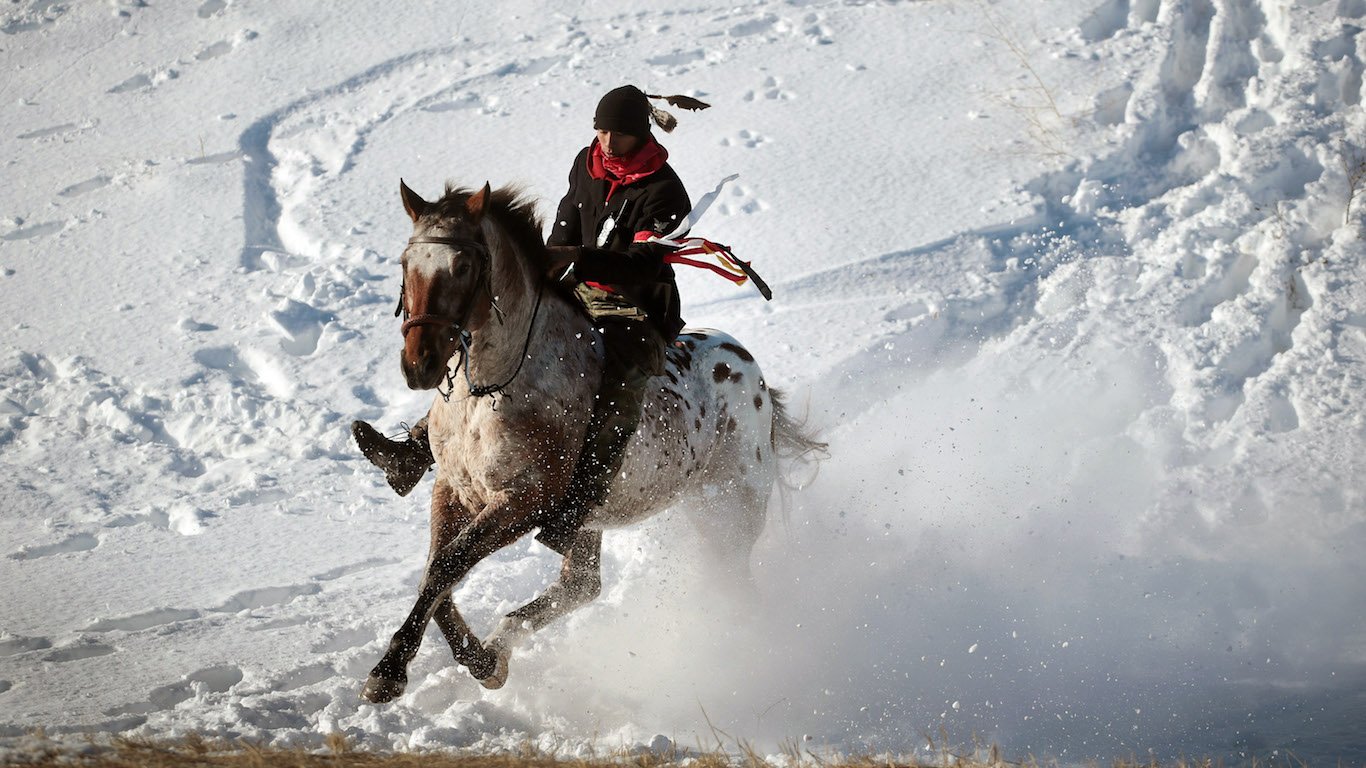
15. Sioux
> Area: U.S.A
When Europeans arrived to America, they brought disease, warfare, and modern tools and weapons, all of which led to the decline of indigenous societies in the continent. Native populations in the United States are estimated to have reached their lowest point in 1900, with fewer than 250,000 people. Native American cultures have adapted and endured but continue to face serious problems. The Dakota Access pipeline dispute at the Sioux Standing Rock reservation last year is one example of the continued threats against indigenous societies in the United States. Despite the best efforts of protestors, the pipeline, which runs 1,100 miles across the Great Plains, connecting the Bakken oil formation in North Dakota to a refinery and second pipeline in Illinois, began running oil earlier in June this year.
Sponsored: Attention Savvy Investors: Speak to 3 Financial Experts – FREE
Ever wanted an extra set of eyes on an investment you’re considering? Now you can speak with up to 3 financial experts in your area for FREE. By simply
clicking here you can begin to match with financial professionals who can help guide you through the financial decisions you’re making. And the best part? The first conversation with them is free.
Click here to match with up to 3 financial pros who would be excited to help you make financial decisions.
Thank you for reading! Have some feedback for us?
Contact the 24/7 Wall St. editorial team.
 24/7 Wall St.
24/7 Wall St. 24/7 Wall St.
24/7 Wall St.
